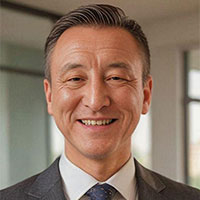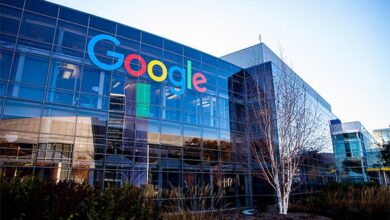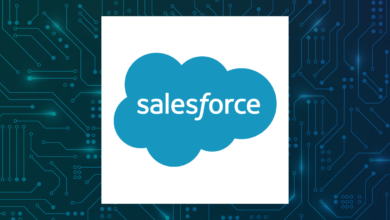Surefront Unified Toolkit Modernizes CRM, Retail Management

Debuting in 1982, the Bloomberg Terminal has been the most powerful, flexible tool for financial professionals to access real-time data, news, and analytics provided by the financial data vendor Bloomberg LP. The system also delivers news, price quotes, and messaging across its proprietary secure network, revolutionizing financial markets.
More than four decades later, it remains at the cutting edge of innovation and information delivery with fast access to news, data, unique insight, and trading tools, helping leading decision-makers turn knowledge into action.
Retailer Luke Wang, CEO of lifecycle management collaboration tool provider Surefront, searched for a comparable software platform for retail businesses. Not finding one, he built his own.
Today, Surefront has revolutionized the retail industry with its innovative solution that Wang considers to be the Bloomberg Terminal for retail. It powers the rapid merchandising technology undergirding retailers like BaubleBar and Bony Levy.
Surefront merges the tasks provided separately in product lifecycle management (PLM), product information management (PIM), and customer relationship management (CRM) software, saving thousands of hours of development time annually.
Wang claims this disruptive technology has significantly enhanced efficiency, driven down costs, and force-multiplied sales for early adopters. His product allows companies to manage product catalogs, streamline communication, collaborate on merchandising decisions in real time, and track key performance metrics.
“Almost all enterprise software has been built to automate business processes inside a particular organization. Surefront is pioneering an uncharted space of connecting multiple organizations, each with a unique and complex hierarchy, so users of each organization can collaborate with other users from different organizations on product development and merchandising,” Wang told CRM Buyer.
5 Year Path to Success
It took five years to build a working prototype of the platform that would ultimately become Surefront. If his developer team had not integrated transactions into Surefront, it would have been a much quicker development experience.
“It was important for us to capture the totality of the retail and manufacturing experience, including the rhythm of transactions. It took us many years, but we ultimately went to market with a fully fleshed out product as opposed to a prototype that only hinted at things to come,” Wang recalled about overcoming one of the biggest hurdles.
The benefit of that long development road toward release was when he did finally go to market, the value was immediately apparent to companies, he noted.
Often, prospective customers first saw Surefront via a demo or their own research and shared a common response. They agreed that its value was obvious.
“There is nothing else like it. So now, in hindsight, we can be proud of that development slow burn and crawl toward release,” he said.
Transforming Retail and Manufacturing with CRM Technology
We asked Wang to discuss his CRM product and his approach to reinventing how he sees CRM tools for retailers revolutionizing that industry.
CRM Buyer: Why did the retail industry need its own terminal services?

CEO at Surefront
Luke Wang: Each specialized industry should have its own specialized solution.
Think of the retail sector largely as a supply chain. Retailers buy from suppliers. Suppliers buy from factories or manufacturers. Beyond that, the merchandise pipeline is the issue of transportation, logistics, and shipping.
Every purchase order written generates sub-purchase orders, which then, in turn, make their way through each of these stages.
The necessity of a specialized terminal equivalent becomes quite clear. Individualized product attributes also separate the retail industry from others. That is why Surefront also has robust product information management [PIM] features.
Why not modify CRM rather than build a new one?
Wang: You cannot just borrow a financial services terminal directly. The tools do not properly align between retail and financial services. You need the ability to accommodate the needs of a product hierarchy and each product’s descriptions, videos, images, and customer feedback. Hence the need for a terminal service tool unique to this industry.
What challenges did you face in pivoting from retail sales to retail technology development?
Wang: I am fortunate at this stage in my life to have accrued experience in both fields. I am technically trained in technology and even wrote code during and after my education before getting into retail. The best example of the difference between the two industries is how sales operate for each.
Selling technology is very different from selling a retail product. Technology has a longer selling cycle and behavior changes. Larger organizations tend to have IT departments that make particular technology purchasing decisions. IT is the purchaser, but a company’s workforce is the end user.
Retail involves a much simpler sales relationship with the buyer, usually the end user. It is a simpler and much quicker transaction compared to the more methodical, slower, and larger-scale purchase and implementation of the technology sector.
PLM, PIM, and CRM tools are staples in today’s e-commerce businesses. How does Surefront distinguish itself from other tools in terms of innovation?
Wang: One word: unified. The retail supply chain is fundamentally about buying and selling. Retailers have two functions. One is to buy in bulk from suppliers at lower prices. They call that B2B sales. The other is B2C, selling to consumers at a higher price, one at a time.
But no business is involved in only one function. You cannot sell without first buying. Since businesses must do both, they need a buy and a sell solution to do business effectively. But if you have two separate solutions, how do products flow from your buy portion to your sell portion?
How does the Surefront platform manage all the information from multiple sources?
Wang: That is why we built a universal solution. Attempting to glue together two incompatible systems is how businesses have worked in this space for decades.
Once you have a unified toolkit, you can provide all these services together instead of having multiple disparate solutions that serve just one function. Everything retailers or manufacturers need to know about their business, whether it be product information or customer relationships, is all there in one universal platform.
How does Surefront pull the old-school retail and manufacturing sectors into a tech-enabled future?
Wang: Broadly speaking, the old school is defined by its use of the old tools. Working on spreadsheets, using emails to share PDFs, etc. I would call the old way an isolated, siloed way of doing business using antiquated technologies and tools. These are no longer the best collaboration tools, especially for this specific industry.
So, we transition the industry away from that by providing businesses with newer, improved tools designed specifically for this industry’s needs. It sounds quite simple, but companies are so accustomed to making the older, more challenging way work for them that few even suspect an easier way now exists.
What is around the corner for the Surefront platform, and the role AI can bring to the functionality?
Wang: The process of building a platform means first building enablement and transactions. AI is built upon large data sets. Without that complexity, AI does not work for you just yet.
With the unified platform accomplished, we can build out analytics tools using AI within them. We are now building out dashboard analytics that will generate more customer data. That will give us an ecosystem for AI deployment to help unlock even deeper insights and efficiencies for our customers.



